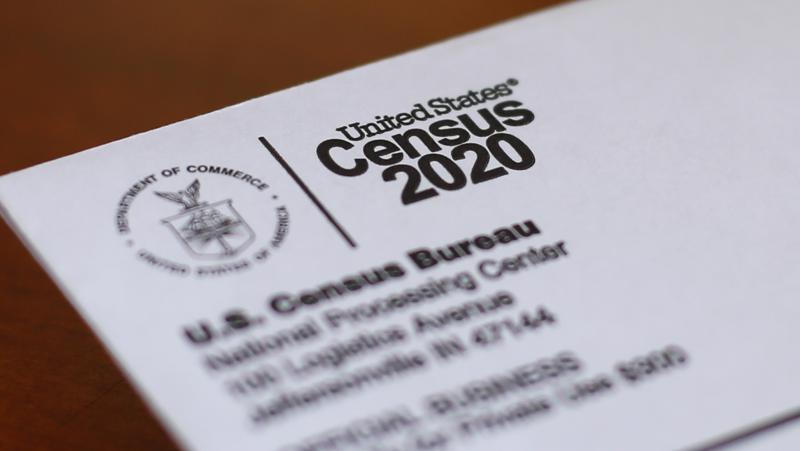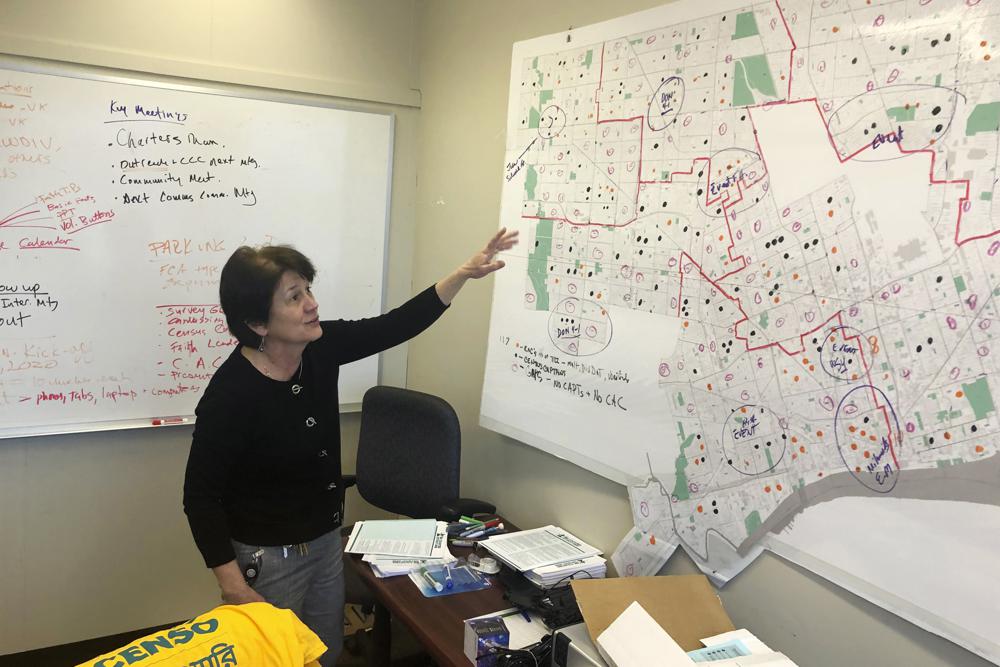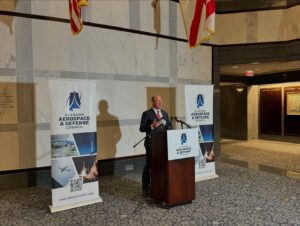Report: Alabama’s fine and forfeiture income is below national average

A study from the Reason Foundation found that Alabama’s income from fines and forfeitures is below the national average. The study by the think tank, which used data from the U.S. Census Bureau’s Annual Survey of State and Local Government Finances, found that Alabamians paid $14.28 per capita as local governments collected $71.75 million in fines and forfeitures in 2020. Nationally, governments collected $9 billion in fines and forfeitures, with 20 states collecting $1 million or more. New York was the worst state, with $69.60 per resident, followed by Illinois ($50.57) and Texas ($40.37). Connecticut was lowest at $2 per resident, followed by Nebraska ($2.02) and Kentucky ($2.50). Alabama’s numbers were lower than all of its neighbors, with Georgia ($35.16 per capita), Mississippi ($24.93), Tennessee ($23.12), and Florida ($19.29). The Yellowhammer State’s low per capita figure still didn’t mean there weren’t small towns that used fines and forfeiture to pad their revenues. Reason researchers found that there were 176 municipalities nationwide that received 50% or more of their revenues from the practice. One of those is Creola, which is located in far northern Mobile County. In 2020, the city raked in $261,000 from fines and forfeitures, which accounted for 73.1% of its revenues. That added up to $1,249 per resident. White Hall in Lowndes County was the other Alabama town, with 50% or more of its revenue coming from fines and forfeitures. In 2020, the town collected $109,000 of its $209,000 in revenue from fines and forfeitures (52.1%). Republished with the permission of The Center Square.
Amazon staff reject union in Alabama, lean toward it in NYC

Amazon workers in Alabama appear to have rejected a union bid in a tight race, according to early results on Thursday. But outstanding challenged votes could change the outcome. In New York, union supporters have the edge in a count that will continue Friday morning. Warehouse workers in Bessemer, Alabama, voted 993 to 875 against forming a union. The National Labor Relations Board, which oversees the election, said that 416 challenged votes could potentially overturn that result. A hearing to go through the challenged ballots will occur in the next few days. Meanwhile, in a separate union election in Staten Island, New York, the nascent Amazon Labor Union is leading by more than 350 votes out of about 2,670 tallied. The close election in Bessemer marks a sharp contrast to last year when Amazon workers overwhelmingly rejected the union. “This is just the beginning, and we will continue to fight,” said Stuart Appelbaum, president of the Retail, Wholesale, and Department Store Union, which is organizing the union drive in Bessemer, at a Thursday press conference. “Regardless of the final outcome, workers have shown what is possible. They have helped ignite a movement.” Appelbaum said RWDSU will be filing objections to how Amazon handled the election but declined to be specific. He also took the opportunity to lash out at current labor laws, which he believes are rigged against unions and in favor of corporations. “It should not be so difficult to organize a union in the United States,” he said. If a majority of Amazon workers voted yes in either Bessemer or Staten Island, it would mark the first successful U.S. organizing effort in the company’s history. Organizers have faced an uphill battle against the nation’s second-largest private employer, which is making every effort to keep unions out. In New York, the ALU has led the charge to form a union along with Chris Smalls, a fired Amazon employee who now heads the fledging group. Turnout for the in-person election was unclear, but Smalls was hopeful of victory. “To be leading in Day One and be up a couple hundred against a trillion-dollar company, this is the best feeling in the world,” Smalls said after the conclusion of Thursday’s counting. While Smalls’ attention has been focused on securing victory in New York, similar efforts in Alabama also weighed heavily. “I’m not too sure what’s going in Alabama right now, but I know that the sky’s the limit if you can organize any warehouse,” he said, noting that the vote in Alabama could well end up differently. “I hope that they’re successful. I don’t know what’s going on yet, but we know we show our support and solidarity with them.” The warehouse in Staten Island employs more than 8,300 workers who pack and ship supplies to customers based mostly in the Northeast. A labor win there was considered difficult, but organizers believe their grassroots approach is more relatable to workers and could help them overcome where established unions have failed in the past. John Logan, director of Labor and Employment Studies at San Francisco State University, said the early vote counts in New York has been “shocking.” ALU has no backing from an established union and is powered by former and current warehouse workers. The group had also filed for a union election after getting support from about 30% of the facility’s workforce, a much lower percentage than what unions usually seek. “I don’t think that many people thought that the Amazon Labor Union had much of a chance of winning at all,” Logan said. “And I think we’re likely to see more of those (approaches) going forward.” Though RWDSU is currently lagging behind with challenged ballots outstanding, Logan said that the election was also remarkable because the union has made a good effort narrowing its margin from last year’s election. After a crushing defeat last year, when a majority of workers voted against forming a union, RWDSU is hoping for a different outcome in the Bessemer election, in which mail-in ballots were sent to 6,100 workers in early February. Federal labor officials scrapped the results of the first election there and ordered a re-do after ruling Amazon tainted the election process. The RWDSU said the election there had a turnout rate of about 39% this year, much smaller than last year. Appelbaum blamed the low numbers on high turnover — he believes thousands of people who worked for Amazon in January and were on the official list to be eligible to vote either quit or were fired. He also believes that an in-person election, which the RWDSU had asked for, would have made a difference. Amazon has pushed back hard in both elections. The retail giant held mandatory meetings, where workers were told unions are a bad idea. The company also launched an anti-union website targeting workers and placed English and Spanish posters across the Staten Island facility, urging them to reject the union. In Bessemer, Amazon has made some changes but still kept a controversial U.S. Postal Service mailbox that was key in the NLRB’s decision to invalidate last year’s vote. Both labor fights faced unique challenges. Alabama, for instance, is a right-to-work state that prohibits a company and a union from signing a contract that requires workers to pay dues to the union that represents them. The mostly Black workforce at the Amazon facility, which opened in 2020, mirrors the Bessemer population of more than 70% Black residents, according to the latest U.S. Census data. Pro-union workers say they want better working conditions, longer breaks, and higher wages. Regular full-time employees at the Bessemer facility earn at least $15.80 an hour, higher than the estimated $14.55 per hour on average in the city. That figure is based on an analysis of the U.S. Census Bureau’s annual median household income for Bessemer of $30,284, which could include more than one worker. The ALU said they don’t have a demographic breakdown of the warehouse workers on Staten Island, and Amazon declined to provide the information to The
Census director Robert Santos has faith in quality of 2020 numbers

The new U.S. Census Bureau director said Monday that he is listening to the concerns of data users and policymakers, and the agency is making permanent community outreach efforts to restore any trust that was lost following attempts by the Trump administration to politicize the nation’s 2020 headcount. Despite those attempts and obstacles created by the pandemic, the Census Bureau did its job, and the numbers used to determine political power and allocate federal funding “are quality products, and they are fit for the purpose they were intended,” Robert Santos said in an interview with The Associated Press. “I have high confidence, and I’ve been incredibly pleased with the professionalism of the career staff at the Census Bureau, the job that they’ve done, and their dedication to the mission, the Constitution, and the rule of law,” Santos said. “They were doing their due diligence, and they made sure they did the job that needed to be done to get the 2020 census done, despite all the obstacles.” The Trump administration unsuccessfully tried to add a citizenship question to the 2020 census form, which opponents feared may have suppressed participation from immigrant groups. The Trump administration also named an unusually high number of political appointees to the bureau, and it tried to end the headcount early last October, after its schedule had been adjusted for the pandemic, in what opponents said was an effort to release the numbers used for divvying up congressional seats while President Donald Trump was still in office. Data from the once-a-decade head count also are used for drawing political districts and helping allocate $1.5 trillion in federal spending each year. The Urban Institute think tank last year estimated that 1.6 million people were missed in the 2020 census, with people of color, renters, noncitizens, children, and people living in Texas most likely to be undercounted. In 2019, a year and a half before he was nominated to lead the Census Bureau, Santos co-authored an Urban Institute report that said African Americans could be undercounted nationally by 3.6% and Hispanics could be undercounted by 3.5%, in worst-case scenarios in the 2020 census. Santos, speaking to The Associated Press from his hometown of San Antonio, Texas, said Monday he had “absolutely zero idea” if those projections were accurate. Next month, the Census Bureau plans to release a report card showing how good a job it did of counting different populations. Santos started a five-year term leading the nation’s largest statistical agency at the beginning of the year after being nominated for the job by President Joe Biden. In his new job, he is overseeing the release of more detailed data from the 2020 census later this year, as well as preparing for the next once-a-decade head count in 2030. Santos said Monday that he is “eager” to work with the Office of Budget and Management on exploring whether the race and ethnic background questions should be combined and whether a category for people of Middle Eastern or North African descent should be added to the 2030 census form. A previous study by the Suitland, Maryland-headquartered Census Bureau showed that combining the race and ethnic background questions increased response rates by Hispanics, who may be uncertain how to answer the race question because they often are from mixed racial and ethnic backgrounds. The Office of Budget and Management had considered pairing the questions for the 2020 census, but the Trump administration decided to keep the race question separate from the ethnicity one. A report released last month from three sociologists said that the current practice of categorizing people from the Middle East or North Africa as white “may not correspond to their lived experiences nor to others’ perceptions.” The Census Bureau director wouldn’t say if he personally supported adding questions on the 2030 census form about sexual orientation or gender identity, saying, “my personal feelings are not fodder for this type of conversation.” Sexual orientation and gender identity are asked about in a new Census Bureau survey formed during the pandemic, the Household Pulse Survey, but they have never been asked about in the much more comprehensive decennial census. “In principle, we need to think about how we can capture a better portrait of the American public,” Santos said. “The American public is nuanced. As time goes on, we are becoming more diverse. We are appreciating culture, language, our own identities in ways that really transcend what existed before.” Republished with the permission of the Associated Press.
Steve Flowers: Reapportionment done; Legislative races begin

The new lines are finally drawn for next year’s state legislative and congressional elections. They have just made it under the wire for the late January qualifying deadline and the May 24, 2022 primary elections. The legislature should not be blamed for the late formulation of the lines because the U.S. Census Bureau did not produce the final detailed figures until September 30, 2021. Therefore, the state legislature did a Herculean job by getting the lines drawn so quickly. They went into special session almost immediately after they received the numbers. However, their immediacy could be because it affects them immensely. Alabama’s legislature is tasked with drawing their own legislative lines, as well as the congressional lines for their state, as is called for by both the United States and Alabama Constitutions. Folks, that is the reason that the census is taken every 10 years. It is mandatory by the constitution to allow for all congressional and legislative districts to have approximately the same number of people. This rule is referred to constitutionally and legally as the one-person, one-vote rule. Alabama’s Constitution of 1901 patterns mandated reapportionment every 10 years like the U.S. Constitution does for Congress. However, Alabama lawmakers simply ignored this mandate for 60 years. the legislative lines had become so unfairly unconstitutionally out of proportion that it was comical. As a young page, I observed the representation in the House and knew something was wrong. My county of Pike had 25,000 people and we had two representatives and the Huntsville area had grown to over 200,000 people and they had only two representatives. Lowndes County had a population of 15,000 and had one senator. Jefferson County with a population of 635,000 had one senator. The Black Belt had gotten an unfair distribution of seats during the 1901 constitutional approval debate and had not relinquished their legislative power. Finally, the federal courts stepped in and dictated one-man, one-vote districts in the now-famous Reynolds v. Sims case in the 1960s, which set the one-man, one-vote principle for the entire nation. It still amazes me that the good people of Jefferson, Madison, and essentially all of north Alabama allowed this incredible injustice to exist for 60 years. The recently completed Reapportionment Session has drawn the new lines for our seven congressional seats, our 35 state senate seats, and 105 seats in the state house of representatives, as well as our eight-state board of education districts. It was thought that there may have to be two sessions – one for congressional and one for legislative redistricting. However, we in Alabama dodged the bullet and did not lose a congressional district as was expected. By keeping our seven seats, it made it much easier. However, kudos and accolades go out to the Reapportionment Committees and especially the Chairmen, Senator Jim McClendon (R-St. Clair) and Representative Chris Pringle (R-Mobile). They have worked diligently since the beginning of the quadrennium. Working on reapportionment is a tedious task, however, very important and powerful. They had to be aware of political and legal parameters. We in Alabama are still under the eye of the U.S. Justice Department because of the 1965 Voting Rights Act. Therefore, they have to start with the premise that African American voters have to be given preference and there needs to be a proper number of majority-minority legislative districts. They had to begin the congressional redistricting with the fact that the 7th Congressional District of Terri Sewell had to be looked at and protected. The paramount concern was self-political preservation so the most ardent task was protecting the districts of incumbent legislators. The courts have held that partisan and incumbent protection is permissible as long as you do not get too carried away with gerrymandering. The supermajority Republican legislature was attentive to what might trigger an adverse judicial ruling on the redistricting plans. Chairman Chris Pringle was very attentive to not creating new Republican districts. They figured that the 77 Republican to 28 Democrat advantage in the House and the 27 Republican to 8 Democrats in the Senate was enough. The courts might see that as regressing or suppressing African American Democratic political power. It was actually difficult to avoid adding new Republican seats because the population growth has been in Republican-leaning enclaves. The Democratic Senators and House members are quietly pleased with the plan because it was incumbent friendly. In other words, the cardinal rule in reapportionment is that you take care of yourself first. Party, race, and colleagues come second. Under the new congressional lines, we will more than certainly still have six Republican and one minority Democratic district. See you next week. Steve Flowers is Alabama’s leading political columnist. His column appears in over 60 Alabama newspapers. He served 16 years in the state legislature. Steve may be reached at: www.steveflowers.us.
Perry County is the fastest shrinking county in Alabama

U.S. population growth slowed over the last decade to its lowest rate since the Great Depression. The U.S. population is aging rapidly. While baby boomers have started to hit retirement age, challenging economic circumstances have caused many younger Americans to postpone having a family — and this was before the pandemic made conditions even more difficult. While the overall U.S. population still increased in the past decade, some parts of the country reported population decline, mostly due to people moving away. As people move away to either retire or to take on a new job, natural population increase (births minus deaths) has not been enough to offset net migration losses. Nearly every state has at least one county where the population declined significantly from 2010 to 2020 — in some cases by well over 10%. Economic opportunity — or lack thereof — can be a major factor that causes people to relocate. Most of the fastest shrinking counties in every state have an unemployment rate and a poverty rate greater than or equal to that of the state itself. Other factors, like prevalence of violent crime, lack of recreational activities, and other less desirable qualities, can also be factors that cause residents to leave an area in droves. The fastest shrinking county in Alabama is Perry County. The county’s population declined by 17.9% from 2010 to 2020. The population of Alabama overall increased by 3.0% during that same time period, and the U.S. population increased by 6.7%. Perry County’s population declined by 1,890 people during the decade, from 10,577 in 2010 to 8,687 in 2020. This is due in part to negative net migration as 1,684 more people moved away from the county than moved to it during that decade. To determine the fastest shrinking county in every state, 24/7 Wall St. reviewed data on population from the U.S. Census Bureau’s Population and Housing Unit Estimates Program. Counties were ranked based on the total population change from 2010 to 2020. Only counties with at least 10,000 residents in 2010 were considered. Data on population change due to natural growth and net migration also came from the Census Bureau PEP program. Data on median household income and poverty rate came from the Census Bureau’s 2019 American Community Survey and are five-year estimates. Data on unemployment for May 2021 came from the Bureau of Labor Statistics and are not seasonally adjusted. Grant Suneson, 24/7 Wall St. via The Center Square
Paul DeMarco: U.S. Census results give a glimpse of changes coming to Alabama

This past week’s official release of the 2020 census data has folks talking about some of what was revealed. Most newsworthy is that Huntsville has overtaken Birmingham as the largest city in the state of Alabama. It was not only the growth of Huntsville that moved them up, but Birmingham continues to shrink in population. Actually, the city of Montgomery is close to also overtaking Birmingham as well. That was expected as the Huntsville community has grown tremendously over the past ten years. Of course, the population and GDP of the Birmingham-Hoover metro area are significantly larger than the Huntsville region. Yet, it is the residents in the rural areas that continue to shrink in the state that is really the headline. The census showed more decline of population outside of the larger cities in the state. Specifically, a majority of the counties in Alabama considered rural lost population.Farmland covers almost a third of the state and one out of almost five employees in the state work in the agriculture industry. Alabama has always been a state with agriculture as the backbone of its economy and culture. Thus, the question will be what effect will the flight from rural Alabama to the cities and suburbs have on the future of the state. For now, Agriculture is still vital to this state and that is good for Alabama. Paul DeMarco is a former member of the Alabama House of Representatives
Census: Alabama more diverse, a few counties driving growth

Alabama’s population has become more diverse over the last 10 years, and a handful of counties helped drive the state’s population growth, according to U.S. Census Bureau numbers released Thursday. Mirroring a trend across the country, Alabama showed an increase in racial and ethnic diversity in the new Census numbers. The percentage of people who identify as white dropped while the state saw an increase in the Hispanic population and a doubling of the percentage of people who identify as multiracial. Whites continue to be the largest racial group in Alabama, but the percentage of people in Alabama who identify as white shrunk from 68.5% in 2010 to 64.1% in 2020. The percentage of people who identify as two or more races more than tripled from 1.5% to 5.1%. The percentage of people who identify as Hispanic increased from 3.9% to 5.3%. There was the slightest decrease in the percentage of people who identify as Black falling from 26% to 25.6. Alabama legislators will use the new census numbers to reconfigure the state’s seven U.S. House districts, 105 state House districts, and 35 state Senate districts. Republicans hold all but one of Alabama’s congressional seats and have wide majorities in the Alabama Legislature. Jefferson County remains Alabama’s most populous county, followed by Mobile, Madison, Baldwin, and Montgomery counties, according to numbers released Thursday. The numbers released Thursday show a handful of counties are rapidly growing while much of the state has been stagnant or seen a decline in population. Madison County added the most people with a population increase of 53,342. Baldwin County was next with a population increase of 49,502. The two counties that are home to the state’s largest universities ranked third and fourth. Lee County added 33,994 people, and Tuscaloosa County added 32,380 people. Shelby County had the fifth-largest growth at 27,939. Alabama’s Black Belt region continued to see population declines, with counties losing 5% or more of their population over the last 10 years. Republished with the permission of the Associated Press.
Data used for drawing districts to be released next week

After a delay of more than four months caused by the pandemic, data from the 2020 census used for drawing congressional and legislative districts will be released next week, the U.S. Census Bureau said Thursday. The bureau will publicize the data next Thursday, Aug. 12, four days before it had promised in a court agreement with the state of Ohio. The information was supposed to be released at the end of March but was pushed back to August to give bureau statisticians more time to crunch the numbers, which came in late because of delays caused by the coronavirus pandemic. The postponement sent states scrambling to change their redistricting deadlines. Alabama and Ohio sued the Census Bureau in an effort to get the redistricting data released sooner. As part of a settlement agreement with Ohio, the Census Bureau promised to release the redistricting data no later than Aug. 16 — a date it had previously picked for releasing the numbers in an older format. The data will be released in a newer format by the end of September. The redistricting numbers will show where white, Asian, Black, and Hispanic communities grew over the past decade. It also will show which areas have gotten older and the number of people living in dorms and nursing homes. The data will cover geographies as small as neighborhoods and as large as states. Republished with the permission of the Associated Press.
EXPLAINER: How does moratorium affect high-vacancy Alabama?

A federal freeze on most evictions enacted last year is scheduled to expire July 31, after the Biden administration extended the date by a month. The moratorium, put in place by the Centers for Disease Control and Prevention in September, was the only tool keeping millions of tenants in their homes. Many of them lost jobs during the coronavirus pandemic and had fallen months behind on their rent. Landlords successfully challenged the order in court, arguing they also had bills to pay. They pointed out that tenants could access more than $45 billion in federal money set aside to help pay rents and related expenses. Advocates for tenants say the distribution of the money has been slow and that more time is needed to distribute it and repay landlords. Without an extension, they feared a spike in evictions and lawsuits seeking to boot out tenants who are behind on their rents. As of June 7, roughly 3.2 million people in the U.S. said they would face eviction within the next two months, according to the U.S. Census Bureau’s Household Pulse Survey. The survey measures the social and economic effects of the coronavirus pandemic every two weeks through online responses from a representative sample of U.S. households. Here’s the situation in Alabama: WHAT’S THE STATUS OF EVICTION MORATORIUMS IN THE STATE? Alabama is one of several states that enacted a moratorium last year halting eviction proceedings. However, the measure expired June 1, 2020, leaving only the CDC moratorium. WHAT’S BEING DONE TO HELP PEOPLE FACING EVICTION? Alabama has set aside more than $263 million from the Consolidated Appropriations Act of 2021 to help tenants with outstanding rent, utility payments, and other expenses. The Alabama Housing Finance Authority received $237 million to administer the statewide program for Emergency Rental Assistance Alabama. The money can go toward 15 months of rent and utilities. Renters who make no more than 80% of the area median income and have experienced economic hardship because of the pandemic qualify. The housing authority said 323 people had received some form of rent and/or utility assistance from ERA Alabama, and another 4,600 applications are pending review. However, that number excludes local jurisdictions that received separate grants in 2020 and 2021. Both renters and landlords can apply for assistance. HOW ARE THE COURTS HANDLING EVICTION HEARINGS? Alabama judges have been holding eviction proceedings, and it is up to renters to claim protection under the CDC moratorium, said Laurie McFalls, an attorney with Legal Services Alabama. Judges are handling the cases differently, she said. Some judges have ordered tenants out but stayed the eviction until the end of the CDC moratorium. In other cases, the judge has stayed the eviction trial until the moratorium lifts. McFalls said her office has seen a dramatic jump in people seeking legal assistance in eviction cases. HOW AFFORDABLE IS HOUSING IN THE STATE’S MAJOR RENTAL MARKETS? Alabama has long had one of the country’s more open rental housing markets. Vacancy rates were about 16% before the pandemic, far above the 7% national average. But numbers suggest rents are increasing. As of May, the median monthly rent in the Birmingham-Hoover metropolitan area had risen 9.4% over the past year, to $1,039, according to a report released June 16 by Realtor.com. Median rents for a two-bedroom apartment had risen 11.1% over the past year, to $1,083. Contributing to the increase are pandemic-related delays in the construction of more multi-family homes. ARE EVICTIONS EXPECTED TO CREATE A SURGE IN HOMELESSNESS? It’s hard to say how much homelessness will increase in Alabama. Both McFalls and Carol Gundlach of the Arise Citizens Policy Project say they believe there will be a surge in homelessness. One indication of the scope of the problem is census data showing 57,049 state residents concerned that they could be evicted over the next two months. One issue is that people may have trouble finding another rental once they have an eviction proceeding on their record, McFalls said. Gundlach urged people to apply for available rental assistance. Republished with the permission of the Associated Press.
Census on track for August data release after court ruling

The U.S. Census Bureau said Wednesday that it’s on schedule to deliver the numbers used for redrawing congressional and legislative districts by mid-August after federal judges rejected a challenge that could have delayed the data release even further. The panel of three federal judges on Tuesday denied the state of Alabama’s request for a preliminary injunction to halt the Census Bureau from using a statistical method aimed at keeping people’s data private in the redistricting numbers. The decision in federal court in Opelika, Alabama, allows the Census Bureau, for now, to proceed toward its goal of releasing the redistricting data by Aug. 16. Alabama and three Alabama politicians had sued the Census Bureau, arguing the method known as differential privacy would produce inaccurate data. But the judges said it was too soon to pass any judgments since the numbers hadn’t yet been released. “It may very well be that the individual plaintiffs will return here once the final redistricting data are actually delivered to the states,” the judges wrote. “But we cannot know whether differential privacy will inflict the harm alleged by the individual plaintiffs until the bureau releases a final set of redistricting data.” The federal judges dismissed counts brought by Alabama that argued the method would produce inaccurate data and was unconstitutional. The state of Alabama and the politicians argued in the lawsuit that the Census Bureau violated proper decision-making rules when coming up with differential privacy, and the judges allowed those counts to move ahead. Bureau officials had said that the release of the redistricting data, already postponed from an earlier March 31 deadline because of the pandemic, would be held up for several more months if they were required to employ an alternative method to protect privacy. The delay has sent states scrambling to change redistricting deadlines or contemplate using other data to redraw political districts. “We note the court’s ruling and will proceed accordingly,” the Census Bureau said in a statement. Differential privacy adds intentional errors to the data to obscure the identity of any given participant in the 2020 census while still providing statistically valid information. The Census Bureau says more privacy protections are needed than in past decades as technological innovations magnify the threat of people being identified through their census answers, which are confidential by law. Civil rights groups have raised concerns that differential privacy could hamper voting rights enforcement and make it harder for the creation of districts where racial or ethnic minorities are the majority. If you picture the privacy tool as a dial with lower settings offering the most privacy and higher settings providing the most accuracy, the Census Bureau dialed up the accuracy in final guidelines issued earlier this month. The statistical term for this dial is “epsilon,” and the bureau settled on an epsilon of 19.61, significantly higher than where the dial was set in earlier test versions that critics raised concerns about. In a statement provided by the state’s legal team, Alabama Attorney General Steve Marshall said they were disappointed by the decision but would decide how to proceed after the redistricting data is released in August. The judges’ ruling failed to answer if redistricting data must be based on the actual headcount produced during the once-a-decade census and if the “unprecedented level of error” the Census Bureau plans to inject into the data is lawful, Marshall said. “We think the answers to those questions are clear: the Bureau has no authority to manipulate population data states use for redistricting, and the Bureau’s decision to dramatically skew redistricting data is patently unnecessary and unlawful,” Marshall said. “Those issues remain live in this case.” Republished with the permission of the Associated Press.
A look at what’s next in the release of 2020 census data

There were some genuine surprises in the first batch of data from the nation’s 2020 headcount released this week by the U.S. Census Bureau. Officials in some Sun Belt states were bewildered they did not gain more congressional seats from the apportionment numbers used for divvying up congressional seats among the states. Officials in states like Alabama, Minnesota, and Rhode Island were relieved they did not lose seats they had been expecting to forgo, with some eking out a save by the slimmest of margins. But the 2020 census is far from over. Here’s what to expect over the next several months. WHAT’S NEXT? To quote The Carpenters’ 1970s song, “We’ve Only Just Begun.” The 2020 census data released this week — state population counts of every resident — were just the tip of the iceberg of what’s coming later. More detailed data on households’ racial, ethnic, and gender makeup, whether they rent or own their homes, and how everybody is related in their homes, at geographic levels as small as neighborhoods, will be released sometime in August and September. States use this granular data to redraw congressional and legislative districts in a process that often leads to bitter, drawn-out, partisan fights. States are in a tizzy this year since the redistricting data won’t be ready until months past the original March 31 deadline because of the pandemic and the discovery of anomalies the Census Bureau needed to iron out. Twenty-seven states are required to finish redistricting this year. States with tight deadlines this year have gone to court to extend them, changed deadlines through constitutional amendments, and talked about using other data sources. Ohio and Alabama have sued the Census Bureau, trying to force the agency to release the redistricting data sooner. ___ IT WAS MY UNDERSTANDING THERE WOULD BE NO MATH The biggest task facing the Census Bureau between now and the release of the redistricting data in August and September is implementing a new, controversial statistical technique for protecting the privacy of people who participated in the 2020 census. The method, differential privacy, adds mathematical “noise,” or intentional errors, to the data to obscure any given individual’s identity while still providing statistically valid information. Opponents say it will result in inaccurate data. Supported by at least 16 other states, Alabama’s lawsuit on the redistricting data timeline also challenges the use of differential privacy. Bureau officials say the change is needed to prevent data miners from matching individuals to confidential details that have been rendered anonymous in the massive data release. The Census Bureau is still tweaking the technique, and this week the bureau said its most recent updates meet its criteria for accuracy. ___ ARE THE NUMBERS ACCURATE? Experts say it’s too early to pass judgment on the accuracy of the apportionment numbers derived from a count challenged by the pandemic, hurricanes, wildfires, and the Trump administration’s failed attempt to add a citizenship question. Three Sun Belt states with large Hispanic populations — Arizona, Florida, and Texas — fell short of earlier estimates, raising concerns among some advocates that Latino communities were missed. Census Bureau officials say they are confident in the accuracy of the apportionment data and that early analyses show the numbers are consistent with what has been seen in the past. Still, because of the difficulties with the count, the Census Bureau has allowed three outside statisticians to review the numbers for their accuracy. The researchers said Thursday that they will issue an initial report in June. ___ CAN A STATE OBJECT? The Census Bureau allows state, local or tribal governments to request a review of the numbers if they believe the figures are off base. The catch, though, is the Census Bureau won’t make any changes to the figures used for divvying up congressional seats among the states or the redistricting data. Any changes made after a review only would be applied starting in 2022, and that would only be helpful when it comes to getting federal funds. States that are unhappy with the apportionment numbers often sue. New York Gov. Andrew Cuomo hinted at legal action after the apportionment numbers came out this week, showing that 89 more people could have kept New York from losing its congressional seat — if no other states counted any more people. A lawsuit certain to disappear was one brought by Alabama in an effort to exclude from the apportionment numbers of people in the country illegally. Alabama claimed it would lose a congressional seat if undocumented residents were included, but the Cotton State defied expectations by keeping its seventh seat. Former President Donald Trump issued a directive attempting to do the same thing, but President Joe Biden rescinded it when he took office in January. Republished with the permission of the Associated Press.
Census shows Alabama will maintain 7 congressional seats

Alabama will maintain seven congressional seats under new Census numbers released Monday instead of losing a seat as state officials had feared. The outcome is a relief to officials worried that Alabama’s population growth would not be enough to maintain its seats in the U.S. House. A drop to six seats would have decreased Alabama’s influence in Washington and kicked off a particularly difficult redistricting process. The census figures show that Alabama’s population grew by about 5% since 2010 to a little over 5 million residents in 2020. Alabama’s population growth trailed the U.S. as a whole, which grew 7.4% “This data reveals what we’ve known all along – Alabama is a great state to call home, and many are choosing to do so. I am extremely pleased that we will keep all seven of our current seats in the U.S. House to provide valued and needed voices to advocate for our state and our people for the next 10 years,” Gov. Kay Ivey said in a statement. Ivey and other Alabama officials had made a push for state residents to participate in the 2020 census, saying an accurate count was crucial to keeping the state’s representation in Congress and the billions of dollars in federal funding handed out on a per capita basis. Ivey said she offers a “heartfelt thanks to everyone who played a part” in urging census participation. “This was by far the most time and resources that Alabama state government has ever given toward a census count, and I am happy that our efforts and hard work have paid off,” Kenneth Boswell, the chairman of the Alabama Counts! Committee to boost census participation, said in a statement. Republished with the permission of the Associated Press.


